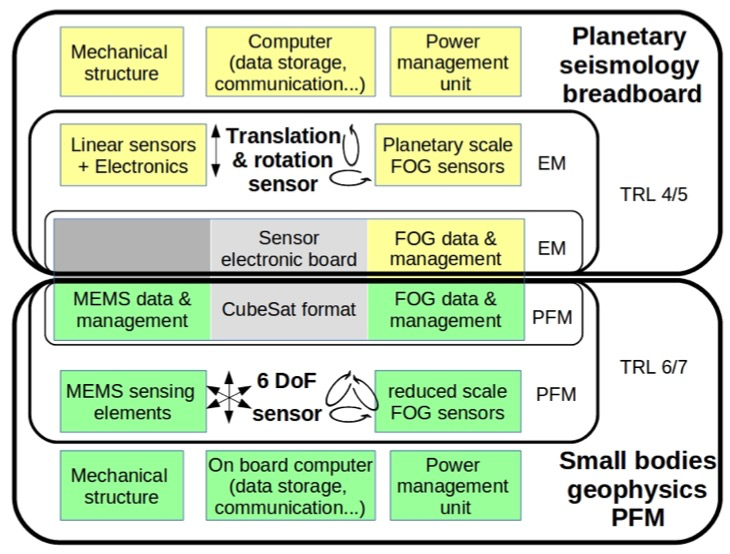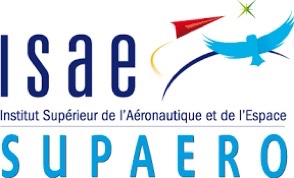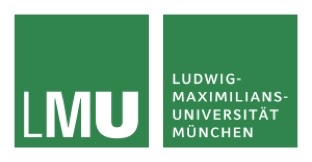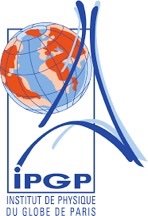Novel approach
Classical seismometers record seismic signals by detection of the translational motion of a test mass due to ground motion. PIONEERS, however, focuses a novel and innovative ground motion instrumentation concept relying on high precision sensors based on optical interferometry and on 6 degrees of freedom (6-DoF) measurements that provide substantial more science return compared to usual seismometers. The 6-DoF refer to the 3 translational (x, y, z) and 3 rotational (ωx, ωy, ωz) directions in space.
The PIONEERS instrumentation employs ring lasers and fiber optic gyroscopes (FOG) to enable low-noise measurements at highest grade. FOG technology is used today for satellite navigation, underwater navigation and positioning, mobile mapping, surface navigation, and very recently also in geoscience, but has never been applied in space.
The combination of rotation and translation measurements returns furthermore information equivalent to small seismic arrays, which is an immense advantage for exploring regions where placing more than one seismic station is too costly, such as in planetary space missions.
The challenges for space mission instrumentation on the other hand are to build small, light-weight, low-power consuming but still high-performant instruments that are able to survive and to operate in extreme conditions, such as vacuum, large temperature excursions and radiation exposure.
PIONEERS instrumentation
The PIONEERS project will develop two 6-DoF instruments for measuring ground deformations of planetary objects. They both respond to different kind of mission scenarios for planetary science and have different performance requirements:
- Planetary seismology engineering model (EM): A high-performance 6-DoF instrument for
planetary seismology developed to TRL* 4/5, consisting of:
- High precision accelerometer sensors based on optical interferometry for very high-resolution translation measurements in the seismic frequency range and
- Very low noise fiber optic rotational sensors.
- Small bodies geophysics pre-flight model (PFM): A 6-DoF compact instrument fitting a
CubeSat formfactor for small bodies geophysics developed to TRL 6/7, consisting of:
- Compact fiber optic rotational sensors and
- MEMS accelerometers.
The high performance electronic board for FOG rotation measurements is shared by the two instruments in different versions (EM and PFM) in order to demonstrate performance scalability with the size of FOG coils. Data analysis methods are specifically designed for a combined 6 DoF rotation/translation sensor and for instrument validation and testing, high performance testing facilities and Earth analogue field testing are foreseen.
These achievements will allow our consortium to compete for future space mission opportunities at international level.

*The Technological Readiness Level (TRL) indicates on a scale from 1 to 9 the development level of an instrument for space applications.







